The Adirondacks region of Upstate New York is a haven for bird lovers. With a vast expanse of wilderness, diverse habitats, and year-round streams and lakes, this region offers an incredible array of birdlife.
From raptors soaring over the mountains to warblers flitting through dense forests, the Adirondacks is home to hundreds of bird species.
Many bird enthusiasts flock to the Adirondacks to glimpse rare species like the spruce grouse, boreal chickadee, black-backed woodpecker, and other indigenous and migratory birds.
Whether you’re a seasoned birder or just getting started, the Adirondacks offers an unparalleled opportunity to experience the beauty and diversity of birds in their natural habitat.
In this article, we’ll explore some of the most noteworthy birds found in the Adirondacks.
1. Black-Capped Chickadee

The black-capped chickadee is a small and cheerful songbird found in deciduous and mixed forests across North America. It has an iconic black cap, white cheeks, gray back and wings with whitish bars on them.
The underparts are usually light colored or greyish brown. This species is well adapted to cold winters as it can reduce its body temperature by up to 8°C while roosting at night; this helps save energy during the colder months of the year.
It feeds mainly on insects but also eats seeds, fruits and suet from bird feeders when available.
Black-capped chickadees are popular birds among backyard visitors due to their sociable nature – they often establish lifelong partnerships with one another for breeding purposes.
Furthermore, they have been designated as state birds of Massachusetts and Maine in USA plus New Brunswick in Canada – a testament to how beloved these little avian friends truly are.
Scientific classification:
| Kingdom | Animalia |
| Phylum | Chordata |
| Class | Aves |
| Order | Passeriformes |
| Family | Paridae |
| Genus | Poecile |
| Species | P. atricapillus |
Also Featured In: Most Common United States Birds, Birds That Live in Colorado
2. Canada Warbler
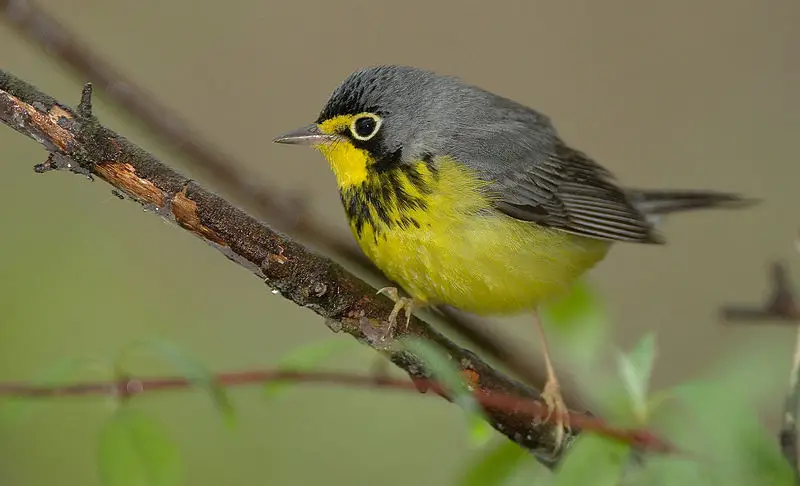
The Canada warbler is a small songbird of the Parulidae family, native to North America. It has olive-green upper parts with yellow underparts and white wing bars, making it easily identifiable.
During summer months they are found in Canada and northeastern United States while during winter their range extends to northern South America.
Mathurin Jacques Brisson was the first to describe this species in 1760 after he collected a specimen from Canada; which resulted in its French name Le gobe-mouche du Canada (Canada’s flycatcher).
Its diet consists mainly of insects such as beetles and mosquitoes, but also includes berries occassionally.
With an estimated population of 5 million individuals they remain common across much of their range although numbers have been declining due to habitat loss caused by human development activities like logging or agricultural expansion.
Scientific classification:
| Kingdom | Animalia |
| Phylum | Chordata |
| Class | Aves |
| Order | Passeriformes |
| Family | Parulidae |
| Genus | Cardellina |
| Species | C. canadensis |
Also Featured In: Common Birds in Canada, Common Northwest Territories Birds
3. Red-Breasted Nuthatch

The Red-breasted Nuthatch is a beautiful and vocal songbird that can be found in coniferous forests across Canada, Alaska, the northeastern United States and western US.
This small bird has blue-grey upperparts with cinnamon underparts, a white throat and face with black eye stripe, straight grey bill and black crown.
Its call sounds like a tin trumpet; it’s high-pitched yet nasal.
During mating season they form monogamous pairs to build their nest near tree trunks or branches at low heights off the ground where they lay 2 – 8 eggs at once.
They are very active little birds who love clinging to trees while searching for insect larvae or seeds within the bark of trees which helps control pest populations.
Scientific classification:
| Kingdom | Animalia |
| Phylum | Chordata |
| Class | Aves |
| Order | Passeriformes |
| Family | Sittidae |
| Genus | Sitta |
| Species | S. canadensis |
Also Featured In: Birds That Live around Seattle, Common Birds in Alberta
4. Cape May Warbler
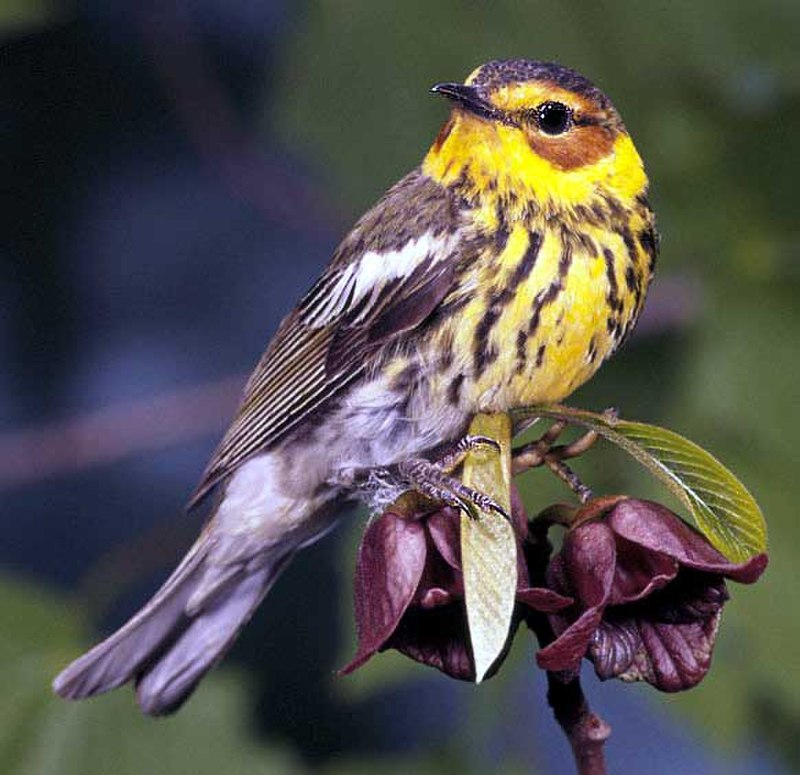
The Cape May Warbler is a species of New World warbler that breeds in northern North America, ranging from southern Canada to the Great Lakes region and New England.
During wintertime it migrates to the West Indies. This bird is an uncommon vagrant to western Europe with two records so far in Britain as of 2013.
It gets its name from being first discovered near Cape May, New Jersey back in 1811 by Alexander Wilson who noted its yellow breast plumage and black streaking on his specimen’s sides.
The males are more brightly colored than females but both sexes have white eye rings which help distinguish them among other warblers during migration season.
They mainly feed on insects and can often be seen foraging at high levels up amongst trees or shrubs where they tend their nests containing 3-5 eggs each breeding season between April – June.
Scientific classification:
| Kingdom | Animalia |
| Phylum | Chordata |
| Class | Aves |
| Order | Passeriformes |
| Family | Parulidae |
| Genus | Setophaga |
| Species | S. tigrina |
Also Featured In: Birds of Haiti, Birds that Migrate through Illinois in the Spring
5. Black-Throated Blue Warbler
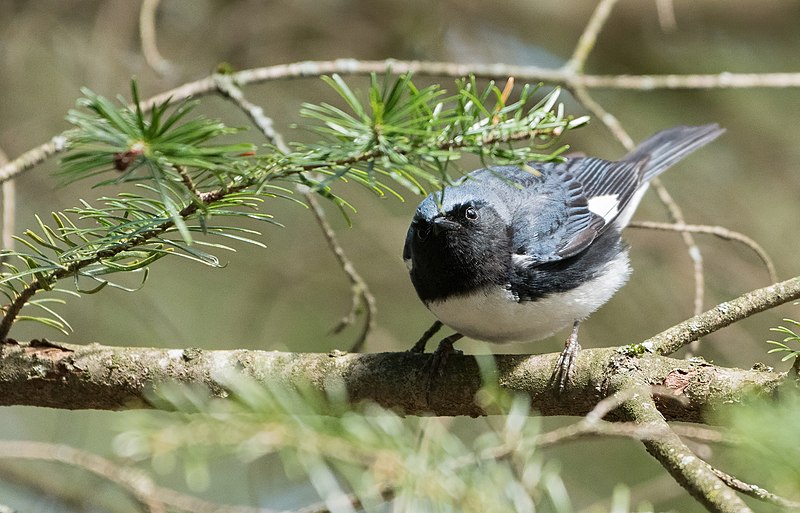
The black-throated blue warbler is a beautiful bird from the New World Warbler family. It breeds in deciduous and mixed coniferous forests of eastern North America, migrating to islands in the Caribbean and Central America during winter months.
This small passerine has an impressive plumage with bright blue upperparts and white underparts that contrast sharply against its coal-black throat patch.
Its wings are dark greyish or olive green with two bold white wing bars on each side; while its tail feathers are yellowish or whitish underneath but gray above.
These birds feed mainly on insects such as moths, beetles, ants, grasshoppers and spiders which they catch by flycatching from low branches or shrubs within their habitat range.
Rarely found in western Europe, it is considered to be non-indigenous there although some individuals have been observed over short periods of time.
Scientific classification:
| Kingdom | Animalia |
| Phylum | Chordata |
| Class | Aves |
| Order | Passeriformes |
| Family | Parulidae |
| Genus | Setophaga |
| Species | S. caerulescens |
Also Featured In: Most Common Types of Birds Found in Cuba, Blue Birds that You’ll Find in Utah
6. Purple Finch

The Purple Finch is a species of finch from North America, belonging to the Fringillidae family.
It’s also known as an “American Rosefinch” due to its resemblance in color and size to some European rosefinches.
Their plumage ranges from pinkish-purple on their heads and wings, with a light brown underside.
They are small birds that measure about 5-6 inches long with short thin beaks for eating seeds and insects.
In addition, they have thick round bodies which help them stay warm during cold winters in the northern parts of their range.
The Purple Finch has adapted well over time making it easier for them to survive even though there are increasing threats posed by humans such as deforestation or habitat destruction caused by development projects near their habitats.
Scientific classification:
| Kingdom | Animalia |
| Phylum | Chordata |
| Class | Aves |
| Order | Passeriformes |
| Family | Fringillidae |
| Subfamily | Carduelinae |
| Genus | Haemorhous |
| Species | H. purpureus |
Also Featured In: Georgia Birds, Magenta Birds You Didn’t Know
7. Common Redpoll
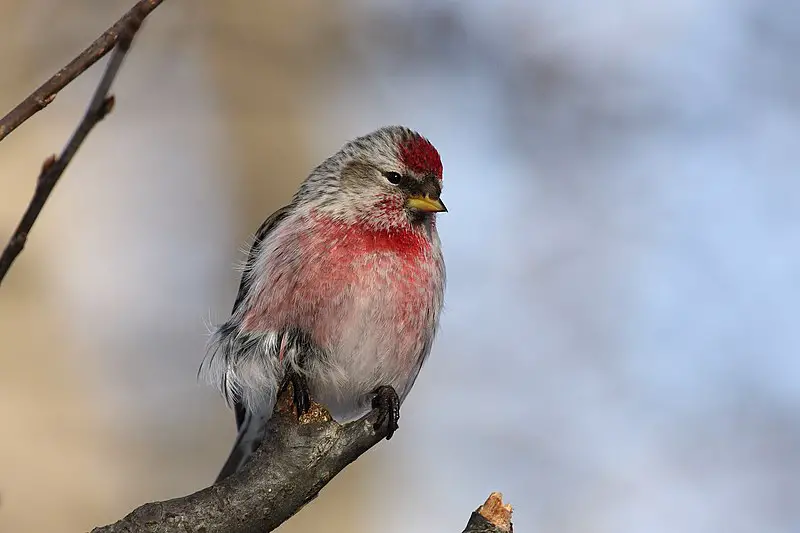
The Common Redpoll is a species of bird belonging to the finch family. It has an orange-red crown, white breast and grey back with two black stripes running down either side.
Its wings are barred in browns and its tail feathers have a grayish tinge at their tips. The redpoll breeds mainly south from Arctic regions in habitats that contain shrubs or thickets.
First classified by Linnaeus in 1758 under the binomial name Fringilla flammea, it’s genus Acanthis originates from Ancient Greek akantha meaning “thorn” or “prickle”.
This small yet colourful bird feeds mainly on seeds such as thistles during summer months but switches over to birch catkins when winter arrives – making them a common sight throughout much of North America and Eurasia.
Scientific classification:
| Kingdom | Animalia |
| Phylum | Chordata |
| Class | Aves |
| Order | Passeriformes |
| Family | Fringillidae |
| Subfamily | Carduelinae |
| Genus | Acanthis |
| Species | A. flammea |
Also Featured In: Finches Species, Most Common Winter Birds
8. Alder Flycatcher
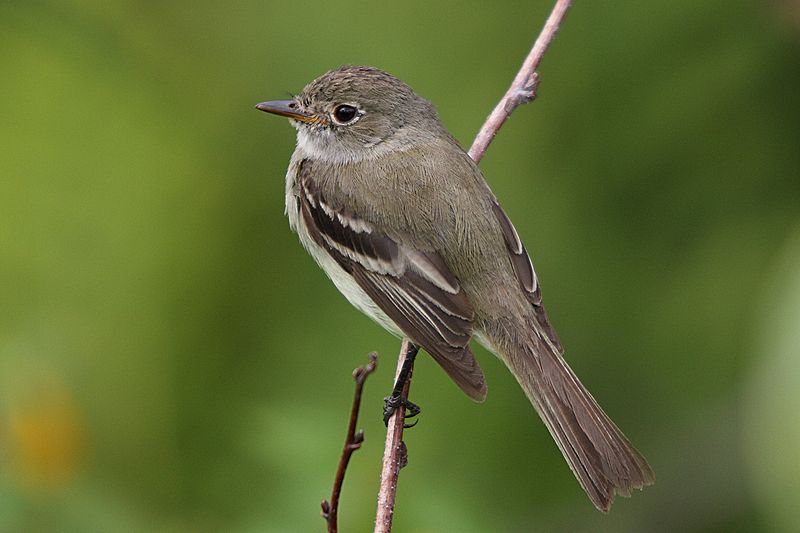
The alder flycatcher is an insect-eating bird belonging to the tyrant flycatcher family. It has a length of 13–17 cm and weighs 12–14 g, with its wingspan ranging from 21–25 cm.
This species can be identified by its greyish brown upperparts and white underparts, in addition to yellow wing bars on each side.
Its bill is dark grey with a black tip, while its legs are pinkish or light gray in colour.
The call of this bird includes both high pitched whistles as well as chirps that sound like “spizik”.
During the breeding season it prefers wet woodlands near water sources such as rivers, streams or lakes – where it builds cup shaped nests within shrubs close to ground level.
These birds feed predominantly on insects but may also occasionally consume fruits during winter months when their preferred food source becomes scarce.
Scientific classification:
| Kingdom | Animalia |
| Phylum | Chordata |
| Class | Aves |
| Order | Passeriformes |
| Family | Tyrannidae |
| Genus | Empidonax |
| Species | E. alnorum |
Also Featured In: Flycatchers Species, Willows Birds Around You
9. Yellow-Bellied Flycatcher
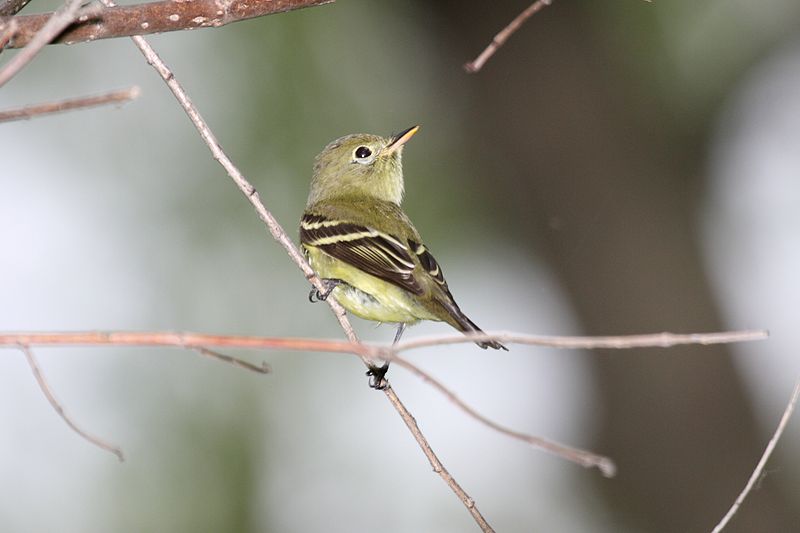
The Yellow-bellied Flycatcher is a small bird of the tyrant flycatcher family. It has greenish upperparts and yellowish underparts, with a dusky wash on its chest.
Its distinctive feature is the white or yellow eye ring that lacks any teardrop projection – setting it apart from other similar species in its family.
This insectivorous bird can be found in open habitats such as forest edges and woodland clearings across much of North America during summer months, when they migrate south to warmer areas for wintertime nesting.
They feed mainly on insects caught by sallying out after them from an exposed perch, but also take fruit occasionally at times of year when there are fewer flying insect prey available to eat.
Scientific classification:
| Kingdom | Animalia |
| Phylum | Chordata |
| Class | Aves |
| Order | Passeriformes |
| Family | Tyrannidae |
| Genus | Empidonax |
| Species | E. flaviventris |
Also Featured In: Birds that Live in Newfoundland and Labrador, Mountain Birds You Should Know
10. Black-And-White Warbler
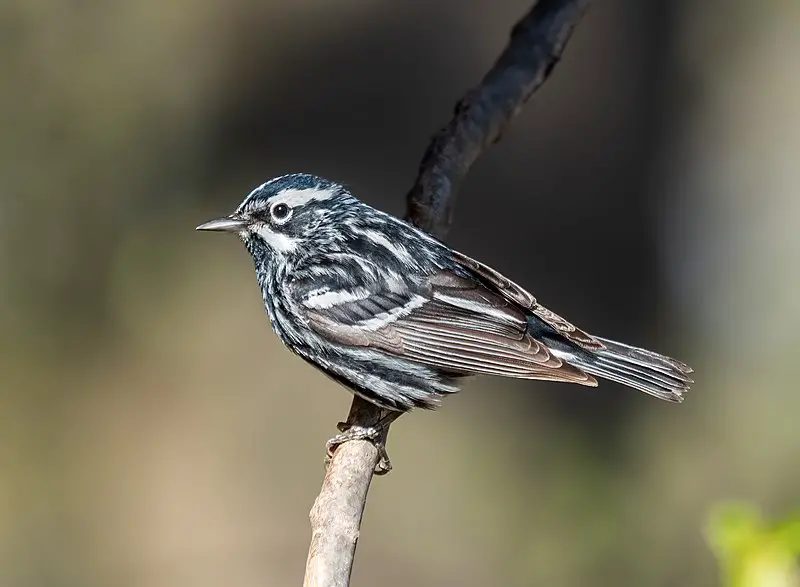
The Black-and-white Warbler is a unique species of bird native to North America. It has striking black and white plumage and breeds in the northern part of the continent, wintering in Central America, Florida, West Indies and Peru.
This warbler is rarely seen as far west as Europe but it’s still being studied for its behavior and ecology.
Its diet consists mainly of insects which it catches by clinging on trees like a woodpecker before quickly darting away again when prey appears.
The population size remains stable although they are vulnerable to habitat loss due to deforestation or other human activities so their conservation status should be monitored closely over time.
Scientific classification:
| Kingdom | Animalia |
| Phylum | Chordata |
| Class | Aves |
| Order | Passeriformes |
| Family | Parulidae |
| Genus | Mniotilta Vieillot, 1816 |
| Species | M. varia |
Also Featured In: Nuthatches Species, Long Island Birds You Should Know
11. American Tree Sparrow
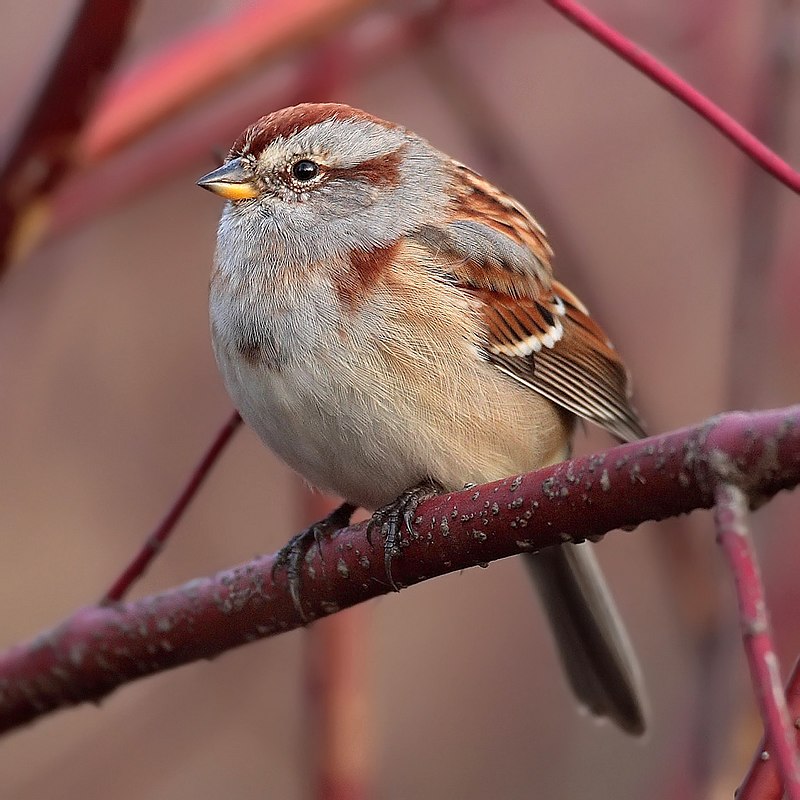
The American tree sparrow, also known as the winter sparrow, is a medium-sized New World bird. It has an attractive rusty cap and grey underparts with a small dark spot on its chest.
Its back is rust colored and striped with lighter shades of brown while its wings have various shades of browns.
These birds are usually found in open areas such as grasslands or marshland during spring migration and can form large flocks when seeking food sources like seeds, insects or berries.
They nest in shrubs or trees near water sources but rarely do so far away from human settlements due to their dependence on supplementary foods provided by humans.
The American Tree Sparrow is a delightful sight for any nature enthusiast.
Scientific classification:
| Kingdom | Animalia |
| Phylum | Chordata |
| Class | Aves |
| Order | Passeriformes |
| Family | Passerellidae |
| Genus | Spizelloides Slager & Klicka, 2014 |
| Species | S. arborea |
Also Featured In: Sparrows Species, Birds Commonly Found in New York
12. Common Yellowthroat

The Common Yellowthroat is a small, New World Warbler found throughout North America. It has distinctive yellow and black plumage that earned it the nickname “Yellow Bandit” in the Midwest United States.
This species is highly adaptable and can be found inhabiting wetlands, grasslands, shrub-land habitats, as well as suburban areas.
The genus of this bird’s scientific name translates to mean ‘ground’ and ‘small bird’, which are fitting characteristics for such an elusive yet common little creature.
Its diet consists predominantly of insects but may also include other invertebrates like spiders or worms.
Overall the Common Yellowthroat makes an excellent addition to any backyard with its cheerful song.
Scientific classification:
| Kingdom | Animalia |
| Phylum | Chordata |
| Class | Aves |
| Order | Passeriformes |
| Family | Parulidae |
| Genus | Geothlypis |
| Species | G. trichas |
Also Featured In: Nebraska Birds, Most Common Songs Birds that Live around You
13. Northern Waterthrush
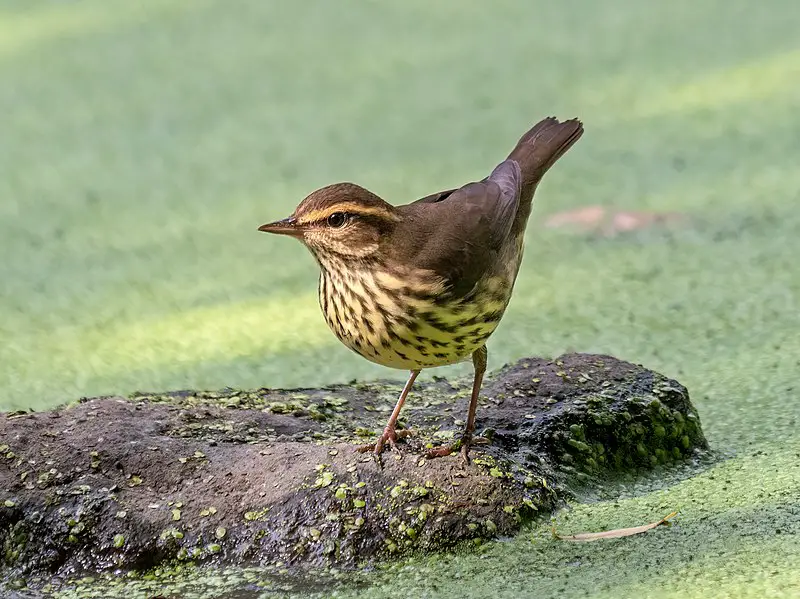
The northern waterthrush (Parkesia noveboracensis) is a small species of migratory New World warbler that breeds in Canada and the northern United States, including Alaska.
During winter it can be found across Central America, as well as parts of South America such as Venezuela, Colombia and Ecuador. It’s a rare vagrant to other regions within South America.
This ground-feeding bird has bright yellow or olive brown upperparts with white streaks down its back along with dark spots on its chestnut coloured throat and breast.
Its belly ranges from light greyish-white to creamy white depending on age; older birds tend towards the latter colouration while juveniles are lighter in tone.
This hardy little creature is able to brave both cold climates during breeding season and also tropical areas when migrating further south for winter months.
Scientific classification:
| Kingdom | Animalia |
| Phylum | Chordata |
| Class | Aves |
| Order | Passeriformes |
| Family | Parulidae |
| Genus | Parkesia |
| Species | P. noveboracensis |
Also Featured In: Louisiana Birds, British Virgin Islands Birds You Need to See
14. Black-Throated Green Warbler
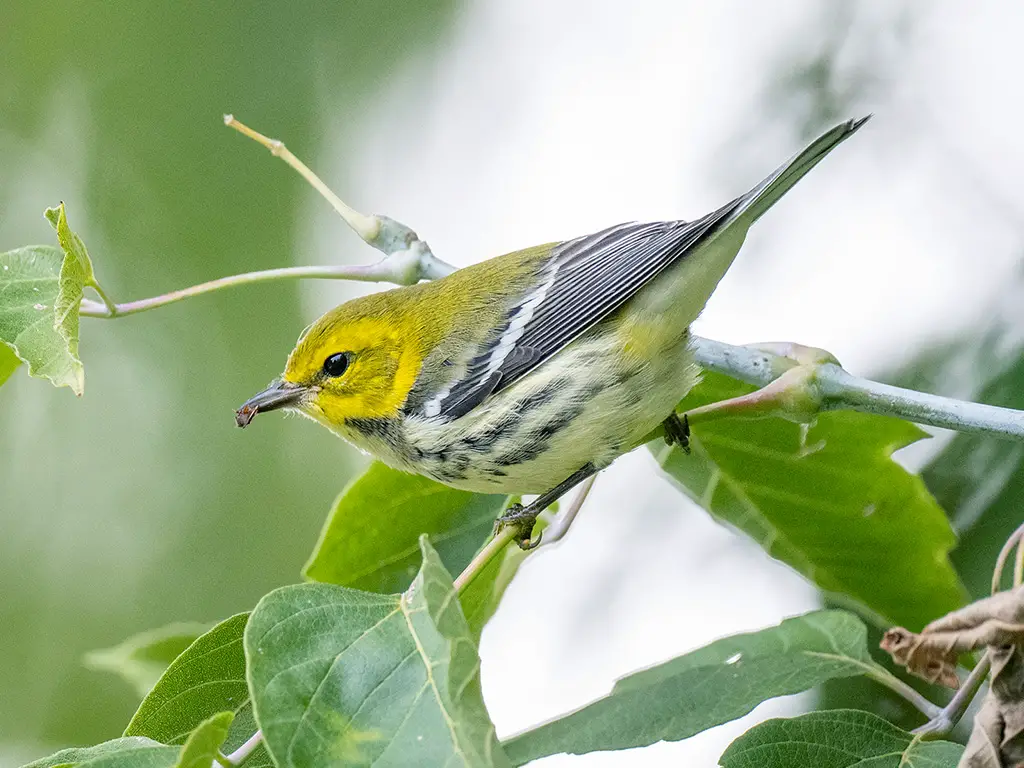
The Black-throated Green Warbler is a beautiful and dainty songbird in the New World warbler family.
It has an olive green crown, yellow face with dark markings, white wing bars and pale underparts streaked with black on the sides.
Adult males have a striking black throat and upper breast while females show paler coloration on their throats but retain some black patterning across their chest area.
They are quite small birds measuring around 14 cm in length from bill to tail tip that make them easy to miss if they aren’t singing.
Their diet consists mainly of insects which they catch by flitting through trees or shrubs as well as foraging among foliage making this species great help in controlling bug populations.
Scientific classification:
| Kingdom | Animalia |
| Phylum | Chordata |
| Class | Aves |
| Order | Passeriformes |
| Family | Parulidae |
| Genus | Setophaga |
| Species | S. virens |
Also Featured In: Maine Birds, Birds of Nova Scotia
15. Northern Parula
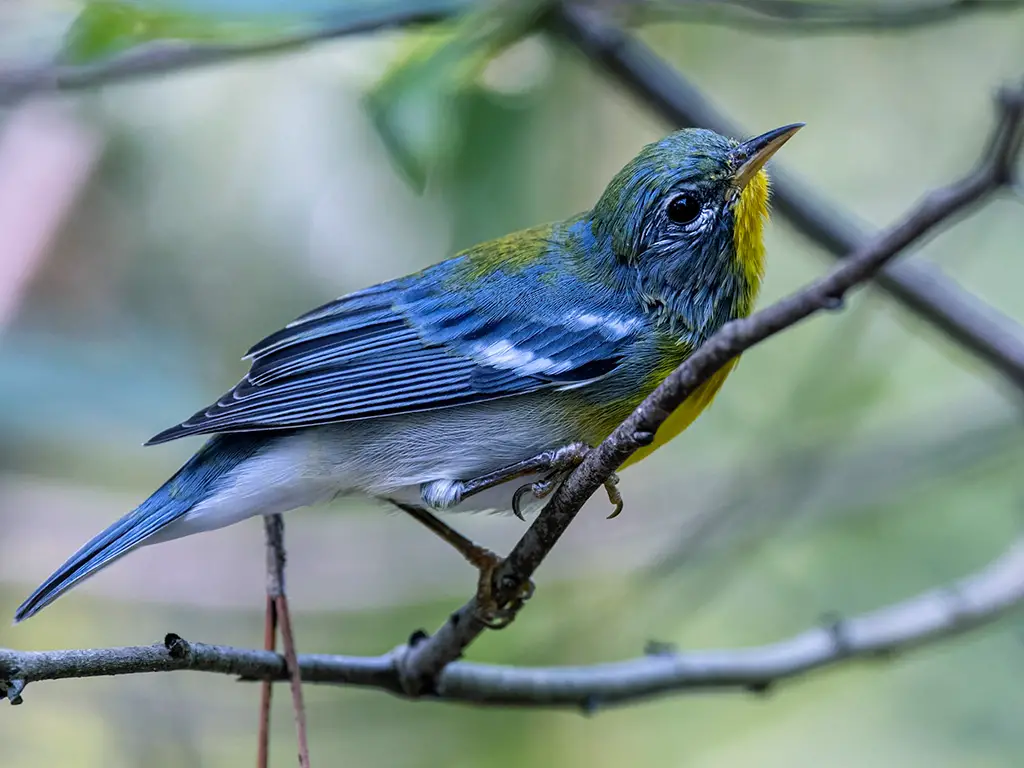
The Northern Parula is a small, migratory warbler native to North America. It measures between 4.3 and 4.9 inches in length and has a wingspan of 6.3-7.1 inches wide.
Its plumage consists mainly of yellowish green upper parts with an orange patch on its chest as well as blue crowns for males during the breeding season.
Females have duller colors than their male counterparts overall but are still quite striking from afar.
This species breeds primarily in eastern Canada down through Florida, though some northern populations may migrate southward come wintertime while others stick around year round depending on the weather conditions they face each year – truly amazing adaptability set them apart from other birds in this region.
Scientific classification:
| Kingdom | Animalia |
| Phylum | Chordata |
| Class | Aves |
| Order | Passeriformes |
| Family | Parulidae |
| Genus | Setophaga |
| Species | S. americana |
Also Featured In: Blue Birds You’ll Found around Us, Yellow Birds You’ll Find in Minnesota
16. Nashville Warbler
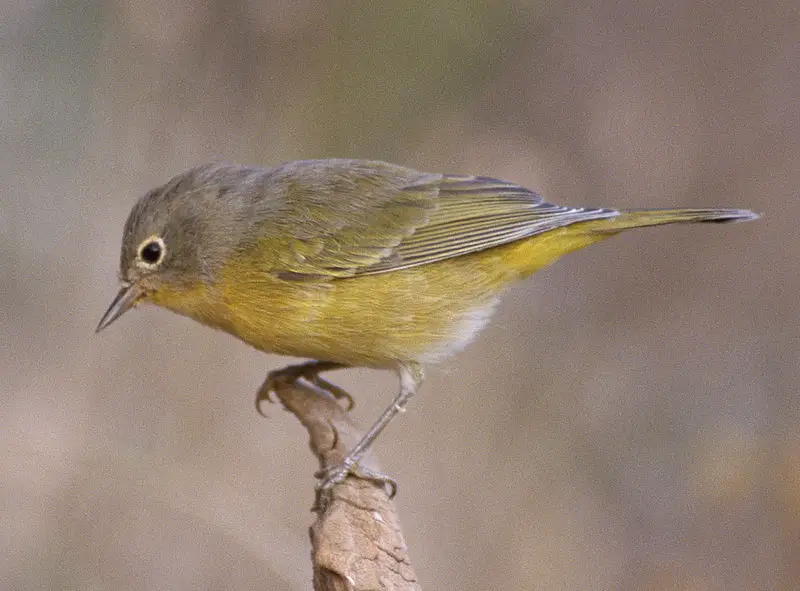
The Nashville Warbler is a small bird found in North and Central America. It has gray head, green back and yellowish-white underparts.
During breeding season it can be seen in parts of the northern and western United States, southern Canada as well as Mexico; while during winter it migrates to places like California, Texas or further south into Central America.
Its diet consists mainly of insects which they find by foraging on trees or shrubs near open woodlands with dense vegetation.
They are fairly active birds that move around often when searching for food, making them easy to spot if you know where to look.
Scientific classification:
| Kingdom | Animalia |
| Phylum | Chordata |
| Class | Aves |
| Order | Passeriformes |
| Family | Parulidae |
| Genus | Leiothlypis |
| Species | L. ruficapilla |
Also Featured In: birds of Kansas, New Hampshire Birds You Should Know
17. Palm Warbler
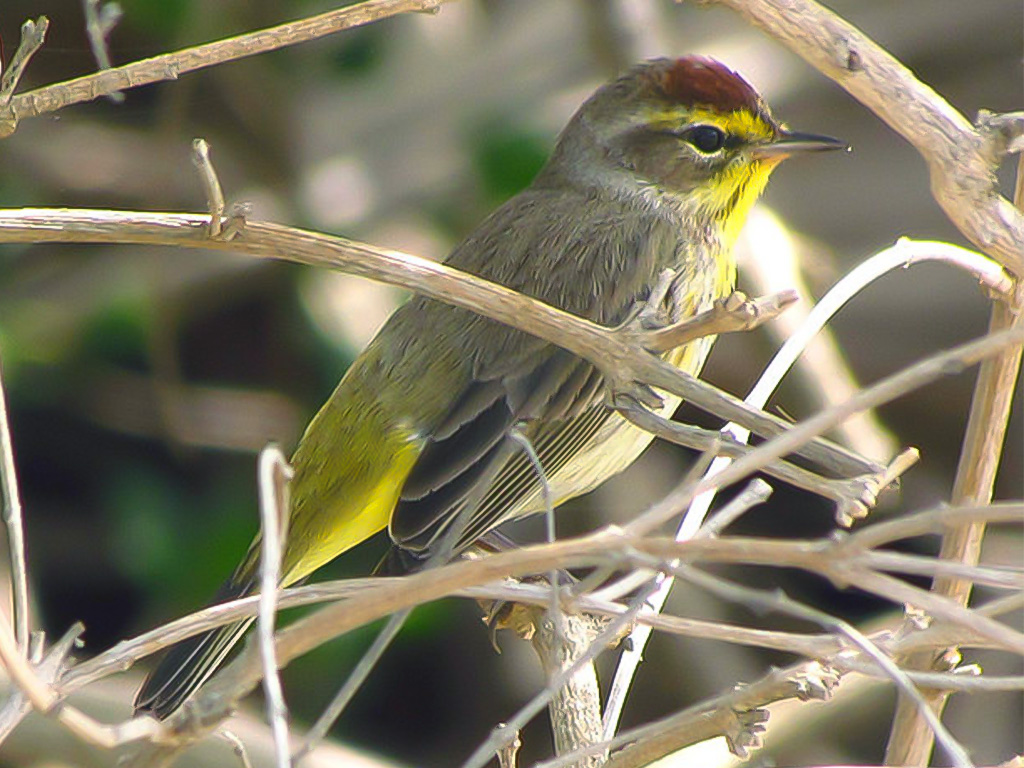
The palm warbler is a small songbird found in the New World, belonging to the warbler family.
It has two distinct subspecies that differ mainly in their plumage – eastern palm warblers have yellower underparts and bolder rufous streaks on their breast and flanks than western ones.
These birds are light olive above with whitish bellies and yellow throats.
They also have distinctive white-tipped tail feathers which they often flick while foraging or singing during breeding season, when males establish territories through song duels.
The diet of these birds consists mostly of insects such as beetles, moths, ants and caterpillars collected from trees or ground vegetation like grasses or sedges.
Palm Warblers migrate long distances between its wintering grounds near Central America to northeastern North American states where it breeds each summer before returning south again come fall.
Scientific classification:
| Kingdom | Animalia |
| Phylum | Chordata |
| Class | Aves |
| Order | Passeriformes |
| Family | Parulidae |
| Genus | Setophaga |
| Species | S. palmarum |
Also Featured In: birds of Rhode Island, Autumn Birds You Should Know
18. Chestnut-Sided Warbler
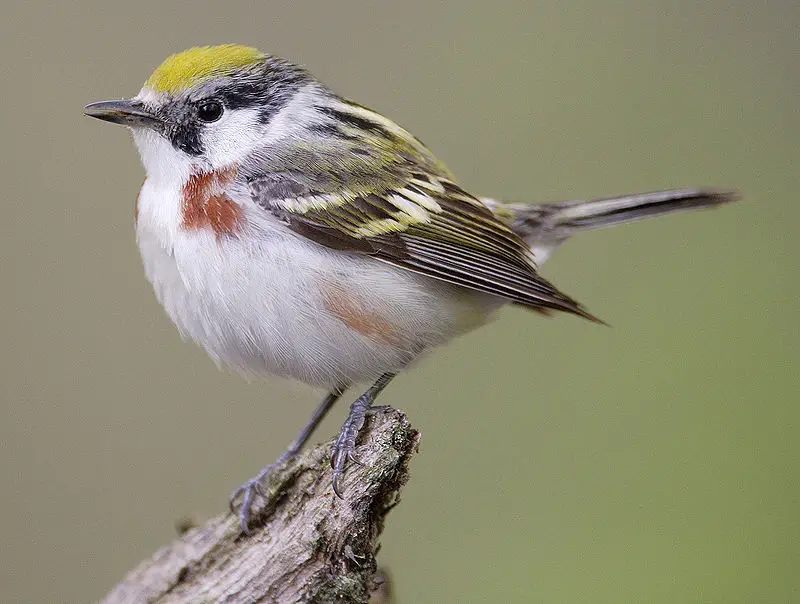
The Chestnut-sided Warbler is a species of New World warbler native to eastern North America, the Canadian Prairies and Great Lakes region.
It gets its name from the chestnut colored feathers on either side of their body.
This genus (Setophaga) receive its scientific name due to their preference for moths as food, which is evident in all stages of life.
During breeding season, this small songbird can be heard singing high pitched songs from treetops or bushes.
They also have an interesting migration pattern; some individuals may migrate north during spring while others will travel south in fall depending on where they are located geographically.
Overall the Chestnut-Sided Warbler is a beautiful bird that deserves our attention and admiration.
Scientific classification:
| Kingdom | Animalia |
| Phylum | Chordata |
| Class | Aves |
| Order | Passeriformes |
| Family | Parulidae |
| Genus | Setophaga |
| Species | S. pensylvanica |
Also Featured In: birds of Vermont, Yellow New Mexican Birds
19. Mourning Warbler
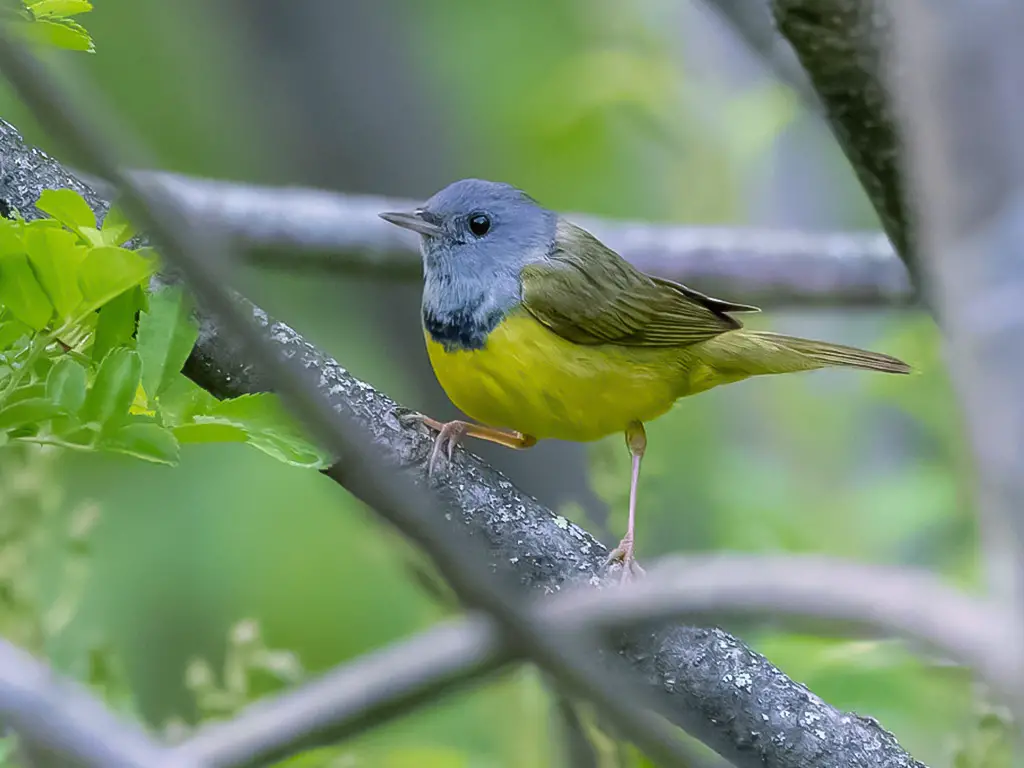
The Mourning Warbler is a small songbird that belongs to the New World warbler family.
Originating in eastern and central North America, as well as some Central American countries, these birds migrate with the seasons and prefer dense second growth forests.
They are easily identified by their bright yellow-green plumage which has a distinct black mask extending from its beak down to its neck, giving it an almost melancholic look – hence the name ‘Mourning’ Warbler.
This species of bird loves singing and can often be heard chirping away during mating season or just mid flight.
With large eyes surrounded by white spectacles they also have strong legs allowing them to perch on trees for long periods at time while hunting insects among leaves and branches.
Scientific classification:
| Kingdom | Animalia |
| Phylum | Chordata |
| Class | Aves |
| Order | Passeriformes |
| Family | Parulidae |
| Genus | Geothlypis |
| Species | G. philadelphia |
Also Featured In: birds of Michigan, Common Central Park Birds
20. Blackburnian Warbler
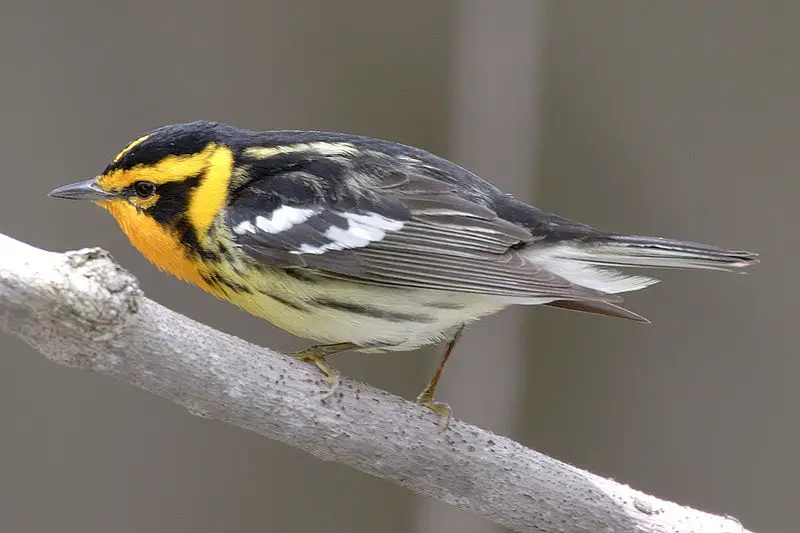
The Blackburnian warbler (Setophaga fusca) is a small New World songbird found primarily in eastern North America.
These birds breed from southern Canada, down to the Carolinas and as far west as the Canadian Prairies, Great Lakes region and New England.
They are migratory birds, spending their winters in Central America or South America; they have also been recorded rarely on western Europe.
The males of this species can be identified by their bright orange-red throat patches set against yellow head feathers.
Females may show some yellowish colouration but lack the distinct markings seen on male specimens.
This species feeds mainly on insects gleaned from tree branches during its breeding period; during migration it will eat fruit or nectar for sustenance instead.
Scientific classification:
| Kingdom | Animalia |
| Phylum | Chordata |
| Class | Aves |
| Order | Passeriformes |
| Family | Parulidae |
| Genus | Setophaga |
| Species | S. fusca |
Also Featured In: birds of Mississippi, Birds You’ll Find in Night
21. Magnolia Warbler
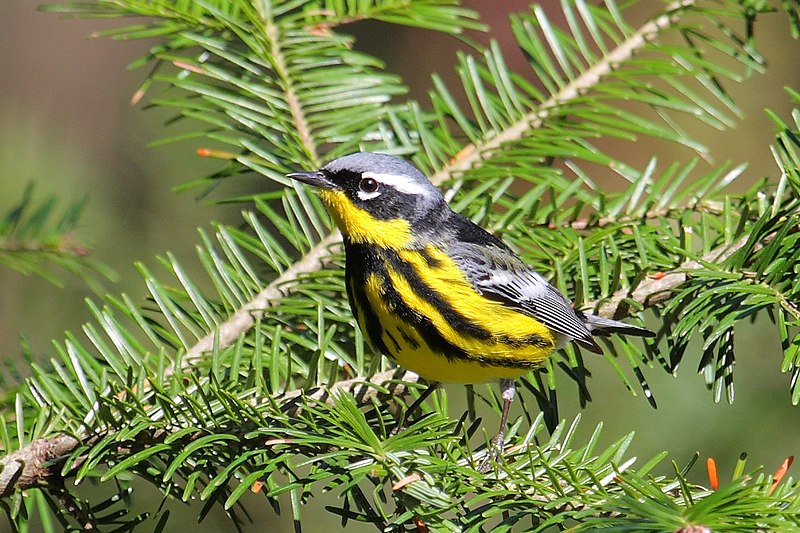
The Magnolia Warbler is a small and beautiful bird native to North America. It belongs to the wood warbler family of Parulidae and its name derives from type locality Fort Adams, Mississippi where it was first discovered by Alexander Wilson.
This species has an overall length ranging between 4 – 5 inches with wingspan measuring up to 6-7 inches long.
Its plumage consists of yellow chest which turns into olive green on top while its underside takes white hue and throat remains black in coloration along with two white wingbars present on either sides.
In terms of diet, they feed mainly on insects like caterpillars, moths etc., but also feeds upon fruits or seeds occasionally during winter season as well as migratory period too.
Scientific classification:
| Kingdom | Animalia |
| Phylum | Chordata |
| Class | Aves |
| Order | Passeriformes |
| Family | Parulidae |
| Genus | Setophaga |
| Species | S. magnolia |
Also Featured In: birds of yellow birds, Common Birds in Saskatchewan
22. Bay-Breasted Warbler
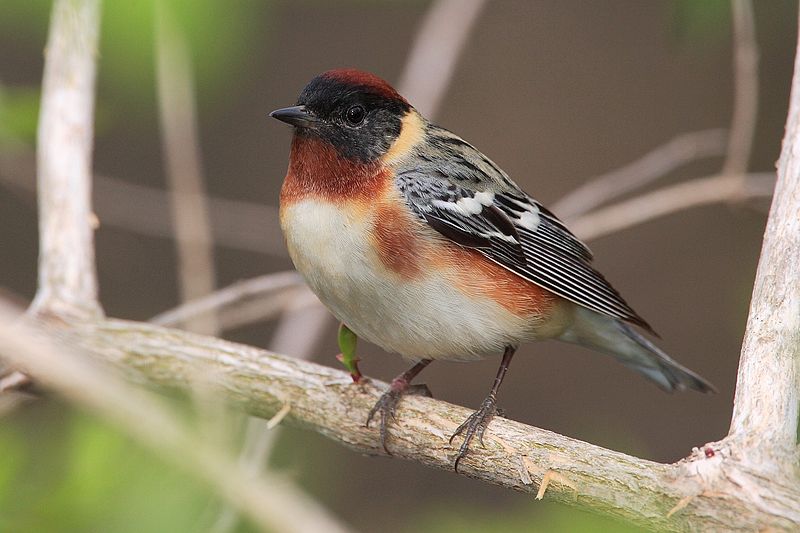
The bay-breasted warbler is a small songbird belonging to the New World warbler family. It is part of the diverse genus Setophaga, which has 34 species.
This bird species is classified in the Passeriformes order, which includes all songbirds. Bay-breasted warblers breed in the boreal spruce-fir forests of central and eastern Canada and the extreme north.
They have a unique coloring of brownish-gray above and reddish-brown below that makes them easily recognizable.
Their preferred habitats during breeding season include large, dense tracts of spruce and fir trees.
These birds are known for their complex songs, which they use to communicate with each other.
They are also important for ecology as they are seed dispersers and play a significant role in forest health.
Scientific classification:
| Kingdom | Animalia |
| Phylum | Chordata |
| Class | Aves |
| Order | Passeriformes |
| Family | Parulidae |
| Genus | Setophaga |
| Species | S. castanea |
Also Featured In: Birds that Found in Cape Breton Island,
23. Ovenbird
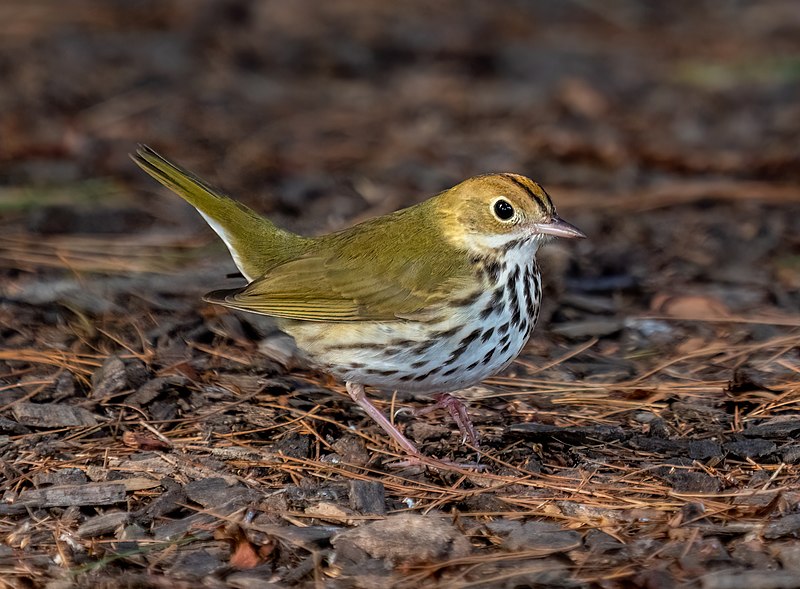
The ovenbird is a migratory songbird found in eastern North America. It winters in Central America, many Caribbean islands, Florida, and northern Venezuela.
This bird belongs to the New World warbler family known as Parulidae. Surprisingly, the ovenbird is the only species in the genus Seiurus. Genetic analysis shows this bird is distinct from all other species of its family.
Scientific classification:
| Kingdom | Animalia |
| Phylum | Chordata |
| Class | Aves |
| Order | Passeriformes |
| Family | Parulidae |
| Genus | Seiurus Swainson, 1827 |
| Species | S. aurocapilla |
Also Featured In: Birds that Live in Manitoba, Green Birds Commonly Found in Florida